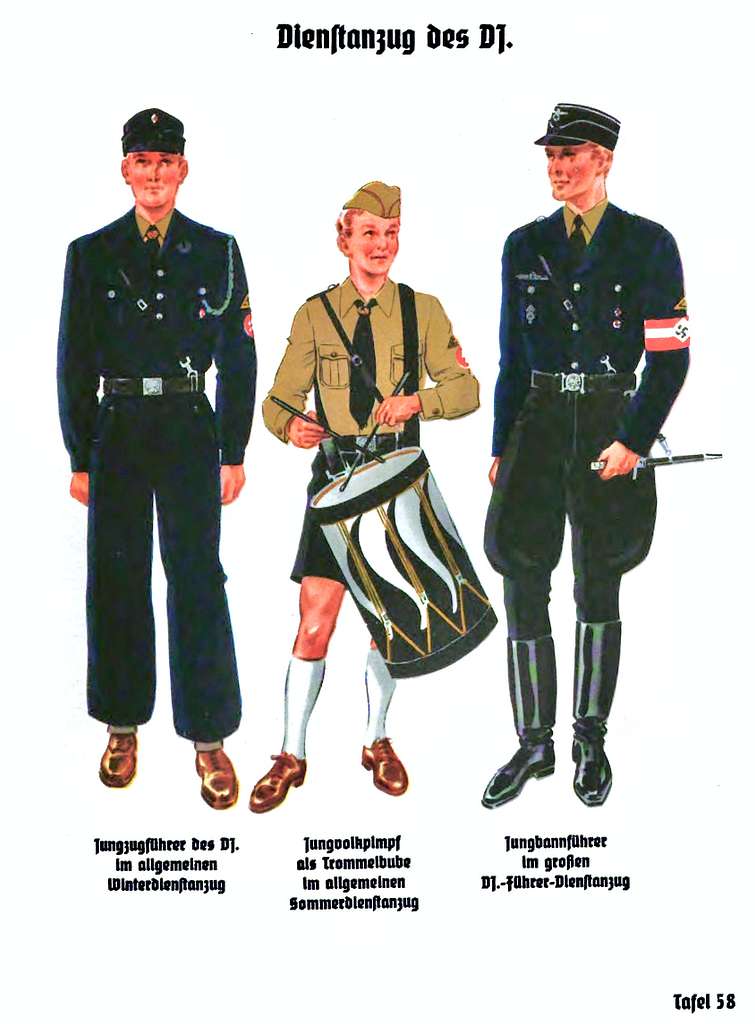Michael Weinstein is a seasoned writer and a dedicated expert in work safety, footwear, and popular shoe brands. With years of research and expertise, he's...Read more
Michael Weinstein is a seasoned writer and a dedicated expert in work safety, footwear, and popular shoe brands. With years of research and expertise, he's...Read more
Adidas, a multinational sportswear company, has a complex history that includes its founding by Adolf Dassler, who had connections with the Nazi regime during World War II. While Adidas did produce footwear for the Nazis, it is important to note that the company has since distanced itself from this affiliation and has taken steps to address its past. Today, Adidas is committed to social responsibility and promotes inclusivity, diversity, and equality in its business practices.
Was Adidas a Nazi Company? You might be surprised to learn about the fascinating history behind this iconic brand. Let’s dive in!
Back in the 1920s, a young German shoemaker named Adi Dassler started crafting high-quality athletic footwear in his small workshop. His passion for innovation and craftsmanship quickly gained attention.
But here’s the twist: during World War II, Adidas, then known as “Dassler Brothers Shoe Factory,” did supply shoes to the Nazi regime. However, it’s essential to understand the complexities of that era and the circumstances surrounding the company’s involvement.

Was Adidas a Nazi Company?
Adidas is an iconic sportswear brand known worldwide, but its past has been shrouded in controversy. Questions have been raised about the company’s involvement with the Nazi regime during World War II. In this article, we will delve into the history of Adidas and explore the extent of its association with the Nazis. By examining the evidence and analyzing different perspectives, we aim to shed light on this complex and sensitive topic.
The Origins of Adidas
Before we delve into the Nazi era, it is important to understand the origins of Adidas. The company was founded in 1949 by Adolf Dassler, also known as Adi Dassler. Dassler had been involved in the sports footwear industry since the 1920s, starting with the creation of spiked shoes for track and field athletes. His passion for innovation and dedication to athletes’ needs laid the foundation for what would become one of the most recognizable sports brands in the world.
Adidas quickly gained popularity in the post-war years and became synonymous with sports excellence. The brand’s iconic three-stripe logo, introduced in the 1950s, cemented its status as a symbol of quality and style. However, it was during the early years of the company that questions arose about its association with the Nazi regime.
The Dassler Brothers and the Nazi Regime
In the 1930s, Adolf Dassler and his brother Rudolf Dassler ran a successful shoe factory in Herzogenaurach, Germany. It was during this time that they allegedly collaborated with the Nazis. Some sources claim that the Dassler brothers were members of the Nazi Party and actively supported Hitler’s regime. However, concrete evidence supporting these claims is limited.
What is known is that both brothers were members of the National Socialist Motor Corps, a paramilitary organization affiliated with the Nazi Party. Adolf Dassler also served in the German Army during World War II. While these affiliations suggest some level of cooperation with the Nazis, it is unclear to what extent the Dassler brothers supported the regime’s ideologies.
Furthermore, it is worth noting that many German businesses had to operate under Nazi control during this time. Non-compliance or resistance could lead to severe consequences, including the closure of the business and imprisonment. It is possible that the Dassler brothers made compromises to protect their company and avoid such repercussions.
Adidas Under the Nazi Regime: Collaboration or Coercion?
During the war years, the Dassler brothers’ factory did produce shoes for the German army. However, it is essential to consider the context in which they operated. Germany was a totalitarian regime, and businesses were often compelled or coerced into supporting the war effort. As a manufacturer of footwear, it is plausible that the Dassler brothers had little choice but to fulfill orders for the military.
There are conflicting accounts regarding the extent of Adidas’ collaboration with the Nazis. Some argue that the company willingly worked with the regime, while others claim that it was a result of coercion. It is challenging to definitively determine the Dassler brothers’ true intentions, as much of the evidence is circumstantial and open to interpretation.
What can be said with more certainty is that Adidas’ association with the Nazi regime, if indeed there was one, occurred during a dark period in history. The company’s subsequent success and separation from the Dassler brothers’ involvement demonstrates a commitment to moving forward and establishing a brand that stands for inclusivity and equality.

Frequently Asked Questions
Welcome to our Frequently Asked Questions section where we address common inquiries about the history of Adidas and its connection to Nazi Germany. Here, we aim to provide accurate information and shed light on this important topic.
1. What was Adidas’s relationship with Nazi Germany?
Adidas, like many other companies during that time, operated in Nazi Germany. During the 1930s, Adidas founder, Adi Dassler, was a member of the Nazi Party. He also reportedly supplied sports shoes to the Nazi military. It is important to note that there is no evidence that Adidas as a company endorsed or promoted Nazi ideologies.
However, it is undeniable that the company had associations with the Nazi regime through its founder’s participation and the supply of sports shoes. Today, Adidas acknowledges this part of its history and emphasizes its commitment to human rights, diversity, and inclusivity.
2. Did Adidas use forced labor during World War II?
There is no evidence to suggest that Adidas directly utilized forced labor during World War II. However, like many other German companies at the time, Adidas may have indirectly benefited from forced labor through its involvement in the war economy. It is crucial to remember that the use of forced labor was widespread in Nazi Germany, and many companies were implicated in this practice.
While Adidas does not deny its association with the Nazi regime, the company has taken steps to address its past and has actively engaged in initiatives promoting fair labor practices and responsible sourcing throughout its supply chain.
3. What initiatives has Adidas undertaken to address its past?
Adidas acknowledges its historical connection to Nazi Germany, and as part of its commitment to transparency and responsibility, the company has taken several steps to address its past. It has engaged in collaborations and partnerships with organizations dedicated to promoting human rights, equality, and diversity.
Adidas also emphasizes its Code of Conduct, which sets out ethical guidelines for its employees and suppliers. The company actively works towards maintaining fair labor standards, environmental sustainability, and social responsibility throughout its operations.
4. How can consumers ensure they are supporting responsible brands?
As consumers, we have the power to make informed choices and support companies that align with our values. To ensure you are supporting responsible brands, consider researching the company’s history, values, and initiatives. Look for brands that prioritize transparency, ethical sourcing, and fair labor practices.
Furthermore, certifications such as Fair Trade, B Corp, or sustainable sourcing initiatives can provide additional assurance that a company upholds responsible practices. Ultimately, by being conscious consumers, we can contribute to positive change and support companies that are committed to making a difference.
5. How does Adidas promote diversity and inclusivity today?
Adidas has made strides to promote diversity and inclusivity within its organization and beyond. The company actively works towards creating an inclusive culture and has implemented initiatives to foster diversity in its workforce. This includes hiring practices that aim for representation from various backgrounds and promoting equal opportunities for all employees.
Adidas also collaborates with diverse individuals and communities to amplify marginalized voices and support initiatives that advance inclusivity in sports and society. Through partnerships and sponsorships, the company strives to create platforms for underrepresented groups and advocate for equality in the sporting world and beyond.
6. What is the history of Adidas?
The history of Adidas begins with its founder, Adolf “Adi” Dassler, who started making sports shoes in his mother’s scullery or laundry room in Herzogenaurach, Germany after returning from World War I. In July 1924, his older brother Rudolf joined the business, and together they established the “Dassler Brothers Shoe Factory” (Gebrüder Dassler Schuhfabrik). This marked the official beginning of the company. From these humble beginnings, Adidas would go on to become a global leader in the sports footwear and apparel industry, known for its innovative designs and dedication to athletic performance.
7. Who is owner of Adidas?
Since the passing of Horst Dassler, son of Adolf Dassler, in 1987, Adidas no longer remains a family-owned business. The company was sold and is now under the ownership of Adidas AG, a multinational corporate group that is owned by various shareholders. This change in ownership has transformed Adidas into a globally recognized brand, with a diverse group of stakeholders contributing to its success and growth.
8. What brand is Rudolf shoes?
Rudolf Dassler, the founder of Puma, created a new brand called “Ruda” by combining the first two letters of his first and last name. However, a few months later, the company underwent a name change to Puma Schuhfabrik Rudolf Dassler. This change marked the beginning of a fierce and bitter rivalry between Puma and Adidas, which emerged from the split. Despite the initial collaboration between Rudolf and his brother Adolf, the competition between the two sportswear giants became intense, shaping the landscape of the athletic footwear industry.
9. Where did Adolf Dassler go to school?
During the early 1930s, Adolf Dassler, commonly known as Adi Dassler, pursued his education at the Schuhfachschule, also known as the Footwear Technical College, situated in Pirmasens. This institution provided him with the necessary knowledge and skills to excel in the field of shoemaking. At the college, Dassler had the privilege of being taught by renowned instructor Franz Martz, a highly skilled master producer of lasts. Interestingly, Dassler’s relationship with Martz extended beyond the classroom, as he became a frequent visitor to Martz’s home. It was in this context that Dassler formed a close connection with Martz’s daughter, Käthe Martz, who was just fifteen years old at the time. Such a unique blend of education and personal experiences undoubtedly played a significant role in shaping the path of Adolf Dassler’s future endeavors in the footwear industry.
Summary
Adidas was not a Nazi company, but it did support the Nazi regime during World War II. The company’s founder, Adi Dassler, was a member of the Nazi party and produced shoes for Nazi soldiers. However, it is important to note that many German companies were forced to collaborate with the Nazis during this time.
After the war, Adidas distanced itself from its Nazi past and focused on building a positive brand image. The company has since made efforts to promote diversity and inclusivity. While it is important to remember history, it is also important to recognize that companies can change and learn from their mistakes.
Recent Posts
Ever wondered why your shoe size varies from brand to brand or from one country to another? The discrepancies often lie in the different measurement systems used globally. Navigating this maze can be...
Adidas Samba Vs Gazelle: What You Need To Know Before Buying?
Ever wondered why some sneakerheads swear by the Adidas Samba while others are die-hard fans of the Gazelle? It's not just about the love for a classic silhouette or brand loyalty. Each model brings...
